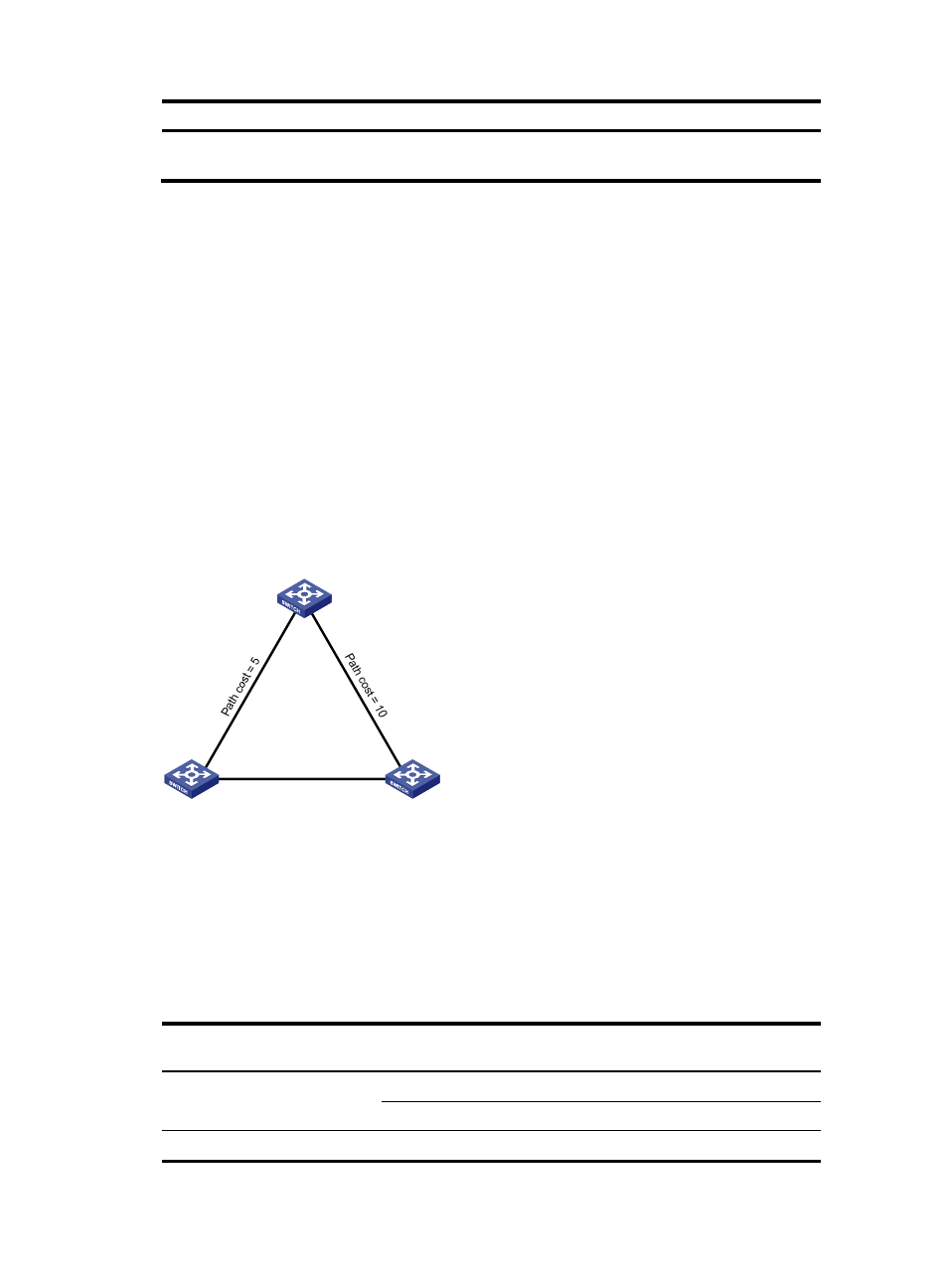Example of stp calculation – H3C Technologies H3C S12500-X Series Switches User Manual
Page 75

64
Step
Actions
2
The device compares the configuration BPDUs of all the ports and chooses the optimum
configuration BPDU.
The following are the principles of configuration BPDU comparison:
a.
The configuration BPDU with the lowest root bridge ID has the highest priority.
b.
If configuration BPDUs have the same root bridge ID, their root path costs are compared. For
example, the root path cost in a configuration BPDU plus the path cost of a receiving port is S.
The configuration BPDU with the smallest S value has the highest priority.
c.
If all configuration BPDUs have the same root bridge ID and S value, their designated bridge
IDs, designated port IDs, and the IDs of the receiving ports are compared in sequence. The
configuration BPDU that contains a smaller designated bridge ID, designated port ID, or
receiving port ID is selected.
A tree-shape topology forms when the root bridge, root ports, and designated ports are selected.
Example of STP calculation
provides an example showing how the STP algorithm works.
Figure 16 The STP algorithm
As shown in
, the priority values of Device A, Device B, and Device C are 0, 1, and 2, and the
path costs of links among the three devices are 5, 10, and 4, respectively.
1.
Device state initialization.
In
, each configuration BPDU contains the following fields: root bridge ID, root path cost,
designated bridge ID, and designated port ID.
Table 6 Initial state of each device
Device
Port name
Configuration BPDU on the
port
Device A
Port A1
{0, 0, 0, Port A1}
Port A2
{0, 0, 0, Port A2}
Device B
Port B1
{1, 0, 1, Port B1}
Device A
Priority = 0
Device B
Priority = 1
Device C
Priority = 2
Port A1
Port A2
Port B1
Port B2
Port C1
Port C2
Path cost = 4
